4.5: Pump Up My Heart
- Page ID
- 2392
\( \newcommand{\vecs}[1]{\overset { \scriptstyle \rightharpoonup} {\mathbf{#1}} } \)
\( \newcommand{\vecd}[1]{\overset{-\!-\!\rightharpoonup}{\vphantom{a}\smash {#1}}} \)
\( \newcommand{\id}{\mathrm{id}}\) \( \newcommand{\Span}{\mathrm{span}}\)
( \newcommand{\kernel}{\mathrm{null}\,}\) \( \newcommand{\range}{\mathrm{range}\,}\)
\( \newcommand{\RealPart}{\mathrm{Re}}\) \( \newcommand{\ImaginaryPart}{\mathrm{Im}}\)
\( \newcommand{\Argument}{\mathrm{Arg}}\) \( \newcommand{\norm}[1]{\| #1 \|}\)
\( \newcommand{\inner}[2]{\langle #1, #2 \rangle}\)
\( \newcommand{\Span}{\mathrm{span}}\)
\( \newcommand{\id}{\mathrm{id}}\)
\( \newcommand{\Span}{\mathrm{span}}\)
\( \newcommand{\kernel}{\mathrm{null}\,}\)
\( \newcommand{\range}{\mathrm{range}\,}\)
\( \newcommand{\RealPart}{\mathrm{Re}}\)
\( \newcommand{\ImaginaryPart}{\mathrm{Im}}\)
\( \newcommand{\Argument}{\mathrm{Arg}}\)
\( \newcommand{\norm}[1]{\| #1 \|}\)
\( \newcommand{\inner}[2]{\langle #1, #2 \rangle}\)
\( \newcommand{\Span}{\mathrm{span}}\) \( \newcommand{\AA}{\unicode[.8,0]{x212B}}\)
\( \newcommand{\vectorA}[1]{\vec{#1}} % arrow\)
\( \newcommand{\vectorAt}[1]{\vec{\text{#1}}} % arrow\)
\( \newcommand{\vectorB}[1]{\overset { \scriptstyle \rightharpoonup} {\mathbf{#1}} } \)
\( \newcommand{\vectorC}[1]{\textbf{#1}} \)
\( \newcommand{\vectorD}[1]{\overrightarrow{#1}} \)
\( \newcommand{\vectorDt}[1]{\overrightarrow{\text{#1}}} \)
\( \newcommand{\vectE}[1]{\overset{-\!-\!\rightharpoonup}{\vphantom{a}\smash{\mathbf {#1}}}} \)
\( \newcommand{\vecs}[1]{\overset { \scriptstyle \rightharpoonup} {\mathbf{#1}} } \)
\( \newcommand{\vecd}[1]{\overset{-\!-\!\rightharpoonup}{\vphantom{a}\smash {#1}}} \)
\(\newcommand{\avec}{\mathbf a}\) \(\newcommand{\bvec}{\mathbf b}\) \(\newcommand{\cvec}{\mathbf c}\) \(\newcommand{\dvec}{\mathbf d}\) \(\newcommand{\dtil}{\widetilde{\mathbf d}}\) \(\newcommand{\evec}{\mathbf e}\) \(\newcommand{\fvec}{\mathbf f}\) \(\newcommand{\nvec}{\mathbf n}\) \(\newcommand{\pvec}{\mathbf p}\) \(\newcommand{\qvec}{\mathbf q}\) \(\newcommand{\svec}{\mathbf s}\) \(\newcommand{\tvec}{\mathbf t}\) \(\newcommand{\uvec}{\mathbf u}\) \(\newcommand{\vvec}{\mathbf v}\) \(\newcommand{\wvec}{\mathbf w}\) \(\newcommand{\xvec}{\mathbf x}\) \(\newcommand{\yvec}{\mathbf y}\) \(\newcommand{\zvec}{\mathbf z}\) \(\newcommand{\rvec}{\mathbf r}\) \(\newcommand{\mvec}{\mathbf m}\) \(\newcommand{\zerovec}{\mathbf 0}\) \(\newcommand{\onevec}{\mathbf 1}\) \(\newcommand{\real}{\mathbb R}\) \(\newcommand{\twovec}[2]{\left[\begin{array}{r}#1 \\ #2 \end{array}\right]}\) \(\newcommand{\ctwovec}[2]{\left[\begin{array}{c}#1 \\ #2 \end{array}\right]}\) \(\newcommand{\threevec}[3]{\left[\begin{array}{r}#1 \\ #2 \\ #3 \end{array}\right]}\) \(\newcommand{\cthreevec}[3]{\left[\begin{array}{c}#1 \\ #2 \\ #3 \end{array}\right]}\) \(\newcommand{\fourvec}[4]{\left[\begin{array}{r}#1 \\ #2 \\ #3 \\ #4 \end{array}\right]}\) \(\newcommand{\cfourvec}[4]{\left[\begin{array}{c}#1 \\ #2 \\ #3 \\ #4 \end{array}\right]}\) \(\newcommand{\fivevec}[5]{\left[\begin{array}{r}#1 \\ #2 \\ #3 \\ #4 \\ #5 \\ \end{array}\right]}\) \(\newcommand{\cfivevec}[5]{\left[\begin{array}{c}#1 \\ #2 \\ #3 \\ #4 \\ #5 \\ \end{array}\right]}\) \(\newcommand{\mattwo}[4]{\left[\begin{array}{rr}#1 \amp #2 \\ #3 \amp #4 \\ \end{array}\right]}\) \(\newcommand{\laspan}[1]{\text{Span}\{#1\}}\) \(\newcommand{\bcal}{\cal B}\) \(\newcommand{\ccal}{\cal C}\) \(\newcommand{\scal}{\cal S}\) \(\newcommand{\wcal}{\cal W}\) \(\newcommand{\ecal}{\cal E}\) \(\newcommand{\coords}[2]{\left\{#1\right\}_{#2}}\) \(\newcommand{\gray}[1]{\color{gray}{#1}}\) \(\newcommand{\lgray}[1]{\color{lightgray}{#1}}\) \(\newcommand{\rank}{\operatorname{rank}}\) \(\newcommand{\row}{\text{Row}}\) \(\newcommand{\col}{\text{Col}}\) \(\renewcommand{\row}{\text{Row}}\) \(\newcommand{\nul}{\text{Nul}}\) \(\newcommand{\var}{\text{Var}}\) \(\newcommand{\corr}{\text{corr}}\) \(\newcommand{\len}[1]{\left|#1\right|}\) \(\newcommand{\bbar}{\overline{\bvec}}\) \(\newcommand{\bhat}{\widehat{\bvec}}\) \(\newcommand{\bperp}{\bvec^\perp}\) \(\newcommand{\xhat}{\widehat{\xvec}}\) \(\newcommand{\vhat}{\widehat{\vvec}}\) \(\newcommand{\uhat}{\widehat{\uvec}}\) \(\newcommand{\what}{\widehat{\wvec}}\) \(\newcommand{\Sighat}{\widehat{\Sigma}}\) \(\newcommand{\lt}{<}\) \(\newcommand{\gt}{>}\) \(\newcommand{\amp}{&}\) \(\definecolor{fillinmathshade}{gray}{0.9}\)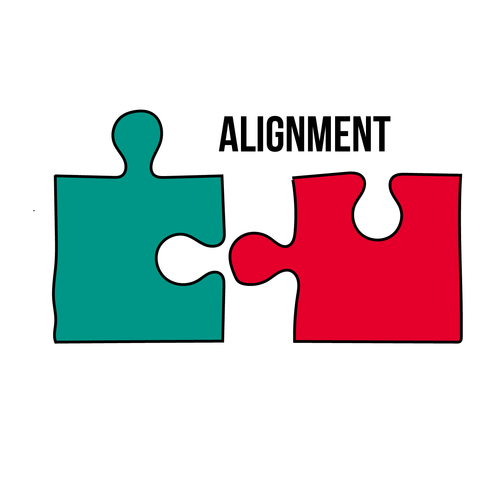
National Health Education Standards (NHES)
- 1.12.1 Predict how healthy behaviors such as being physically active can affect health status.
- 7.12.2 Demonstrate a variety of healthy practices and behaviors such as physical fitness activity can maintain or improve the health of self and others.
Wellness Guidelines
- Increase frequency of physical activity
- Decrease sedentary behavior

- Instruction: In a group or think-pair-share format, have participants discuss the following questions. Acknowledge those who have progressed toward their goal(s) and encourage anyone who wants to change or modify their goal to get 1:1 support.
- Share: Let’s discuss our SMART Goals.
- How is it going with your current SMART goal?
- What are some ways you can improve progress towards your goal? (Grows)
- What are some ways you are doing well with progress towards your goal? (Glows)
GUIDELINE: Increase Frequency of Physical Activity and Decrease Sedentary Behavior
- Share: What guideline do you think is related to today’s lesson? Who has a SMART Goal related to this guideline?
- Instruction: Select one activity.
- Guideline Popcorn: The group lists all 8 guidelines rapidly in popcorn format.
- Guideline Charades: Divide participants into groups and assign each a guideline. Each group has to silently act out the guideline for the rest to guess.
- Two Truths and One Lie:
- Truth 1: The average heart is about the size of a palm.
- Truth 2: The heart is a muscle, and it makes a "lub dub" sound.
- Lie: The only way to find your pulse is by placing a tool over your heart to listen to it.
- Share: There are other ways to find your pulse that we will learn about today.
- Questions to discuss and/or journal:
- Have you ever heard of the term "aerobic" exercises? What do you think it means?
- What exercises do you do that gets your heart working? How often do you do them?
- Do you think it's important to do exercises that strengthen your heart? Why or Why not?
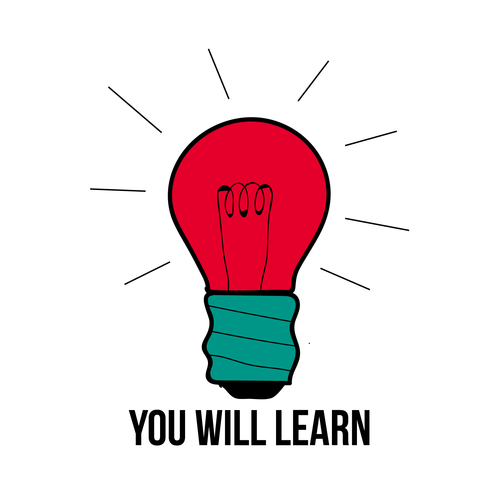
- What aerobic exercise is and why it is important for your heart health.
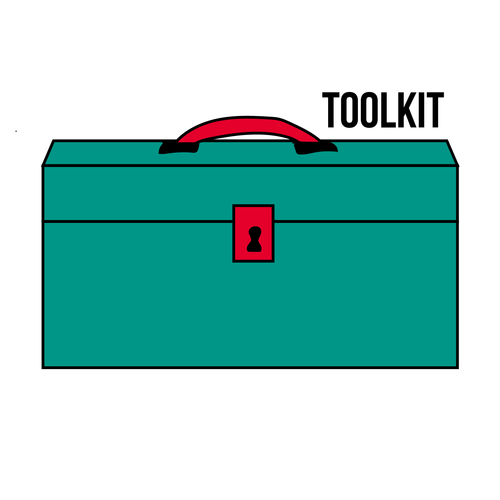
- Worksheets
- Slide presentation
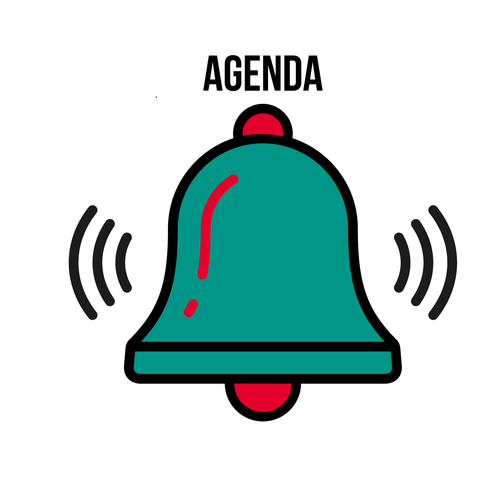
- Do Now
- My Heart in Action
- Check Your Pulse
- Pump It Up Dice
- Exit Ticket
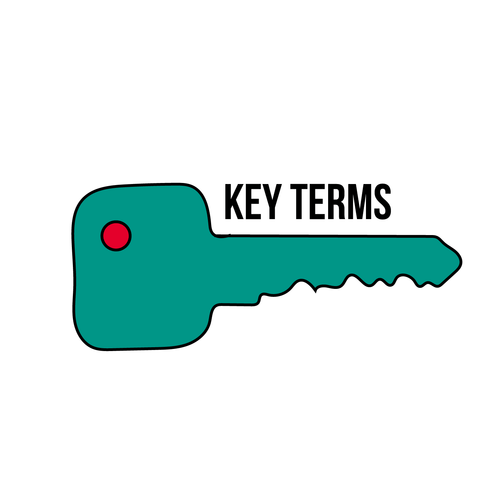
[As defined by: HHS, 2008; NIH, n.d.; American Heart Association, 2015; Merriam-Webster Dictionary, n.d.; WHO, n.d.]
- Exercise: Movement of the body that uses energy that is planned, structured, repetitive, and purposive.
- Physical Activity: Any bodily movement produced by skeletal muscles that require energy expenditure.
- Fitness: Ability to do daily tasks with energy and without getting tired.
- Heart: A palm-sized muscle at the center of your cardiovascular system that is responsible for pumping blood to your body.
- Cardiovascular (Circulatory) System: System in your body that circulates blood and lymph through the body. It consists of the heart, blood vessels, blood, etc.
- Circulate: To follow a course that returns to the starting point.
- Aerobic: Exercises when the body’s large muscles move in a rhythmic manner for a sustained period of time (similar to cardiorespiratory endurance).
- Cardiorespiratory Fitness (Endurance): A health-related component of physical fitness that is the ability of the circulatory and respiratory systems to supply oxygen during sustained physical activity.
- Intensity: How much work (force, weight, or the magnitude of the effort) is required to perform an activity or exercise.
- Heart Rate (Pulse Rate): The number of times your heart beats in one minute.
- Resting Heart Rate: The rate when your heart is pumping the lowest amount of blood you need because you’re not exercising. For most people, it is between 60-100 beats per minute.
- Maximum Heart Rate: An age-related number of beats per minute of the heart when working at its maximum.
- Target Heart Rate Range: The range of heart rates you want to hit during exercise to maximum benefits.
Activities
Do Now: Would You Rather
- Instruction:
- Have participants split down the middle and one half goes to one side of the room and the other half to the other side of the
- Read each question out loud starting with “Would You Rather” and point to one side of the room for the first choice and the other side of the room for the second choice. Instruct participants to choose to walk to one side of the room in response to the question.
- Play basketball or soccer?
- Go jogging or go swimming?
- Exercise with a friend or exercise alone?
- Exercise indoors or exercise outdoors?
- Go running or lift weights?
- Exercise with or without music?
- Exercise in the mornings, afternoons, or nights?
- Use exercise equipment (weights, treadmill, etc.) during your workouts or not use them at all?
- Share:
- Why do you think we played this game? It is to try and see what types of physical activities you like to do and how you like to exercise!
- Exercise is the movement of the body that uses energy that is planned, structured, repetitive, and purposive (HHS, 2008). Exercise can be fun and done anywhere. As we saw in the game we just played, there are many types of physical activities that can count as exercise.
- Physical activity of any bodily movement produced by skeletal muscles that require energy expenditure (WHO, n.d.).
- Physical activity is an important part of our fitness. Fitness is the ability to do daily tasks with energy and without getting tired (HHS, 2015).
Good to Know: My Heart in Action
- Share:
- One of the systems in your body is the cardiovascular (circulatory) System which is responsible for circulating blood and lymph through the body. It consists of the heart, blood vessels, blood, etc. Circulate means to follow a course that returns to the starting point.
- The pump that makes your blood circulate in your heart which is a palm-sized muscle at the center of your cardiovascular system.
- That definition makes sense when you break down what cardiovascular means. Cardio means heart and vascular means veins.
- Your blood circulates in your vessels carrying important nutrients to the rest of your body. For example, blood carries oxygen from our lungs to our tissues, including our muscles, so they can do work.
- Does anyone know the two types of vessels? Veins carry blood towards your heart to get more oxygen and arteries carry blood away from your heart after getting oxygen for the rest of your body. One trick to remember this is arteries starts with “A” and moves AWAY from the heart.
- Your heart is like any other muscle in your body, such as your bicep.
- If you work out your bicep, what happens? It gets bigger and stronger, and you can lift heavier weights.
- Exercising has many benefits, one of which is to make your cardiovascular (or circulatory) system stronger and fitter.
- Exercises that particularly strengthens your heart are aerobic activities.
- Aerobic exercises are when the body’s large muscles move in a rhythmic manner for a sustained period of time (similar to cardiorespiratory endurance) (HHS, 2008).
- Can anyone name some aerobic exercises?
Aerobic exercises
|
Brisk walking Running Hiking Skateboarding |
Rollerblading Bicycle riding Swimming Martial arts |
Sports: football, soccer, basketball, baseball, softball, tennis House and yard work Dancing |
- Cardiorespiratory fitness (endurance) is a health-related component of physical fitness that is the ability of the circulatory and respiratory systems to supply oxygen during sustained physical activity (HHS, 2008).
- For an exercise to benefit our cardiorespiratory endurance, it is recommended that we are working at a moderate to vigorous intensity (about 50-85% of our estimated maximum heart rate) (HHS, 2008). This intensity would be between 5 and 8 out of 10 with 10 being as hard as can be.
- Intensity is how much work (force, weight, or the magnitude of the effort) is required to perform a physical activity or exercise (HHS, 2008).
- Today, we will be learning more about the heart and the exercises that can help keep it strong!
- Similarly, you must work out your heart to also make it stronger so that it can continue to circulate blood and pump efficiently throughout your whole life. If your heart is weak, it can get sick (heart disease) or stop altogether (heart failure).
- Optional: Play this video on the heart: youtu.be/ruM4Xxhx32U
- Set Up:
- Drill a hole in a tennis ball before the following activity.
- Instruction:
- Take the tennis ball with a hole and dunk it in a bucket full of water.
- Once the ball is full of water, pump (squeeze) it with your fist with the hole facing upwards.
- Explain that each time your heart squeezes, blood, like the water, is pushed out of the heart.
- When the ball is empty, relax your fist and let it regain its shape. This represents when the heart fills back up with blood from the lungs to be pushed out into the body.
Real World Relevance: Check Your Pulse
- Share:
- Has anyone ever heard their heartbeat before? What did it sound like? Let’s find out!
- Instruction:
- Split participants into pairs. Give each pair an empty paper towel tube to function as a “stethoscope.”
- Have one of them place one end of the tube to their heart and instruct the other to place their ear on the other end.
- Have participants switch positions.
- Ask them to share out what they hear. They may need to move it around a bit to hear the heartbeat.
- Explain that the “lub-dub” sound they hear is the heart pushing the blood out and filling back up.
- Optional: Play this video to learn more about the “lub-dub” sound: youtu.be/-4kGMI-qQ3I
- Share:
- When we are not moving, our hearts do not have to work very hard to get blood carrying oxygen to our muscles and other body tissues.
- In contrast, when we are exercising, the heart must work harder to carry oxygen to our tissues, one way it does so it by speeding up our heart rate so blood can get from point A to point B faster.
- By exercising, your body needs more blood and oxygen, so the heart will speed up it's
- As a result, increased heart rate is one of the signs that you are exercising. Other signs are an increased reparation rate (breath faster) and skin changes color (pink) or have moisture (sweat).
- Your heart rate (or pulse rate) is the number of times your heart beats in one minute (American Heart Association, 2015).
- The rate can change depending on your weight, age, activity level, and stress level.
- Share:
- Now, we are going to practice finding and counting our heart rate.
- You can take the pulse at the neck, the wrist, or the chest. We recommend the wrist. You can feel the pulse on the artery of the wrist in line with the thumb. Place the tips of the index and middle fingers over the artery and press lightly. Do not use the thumb because there’s actually a faint pulse in your thumb! (CDC, 2015).
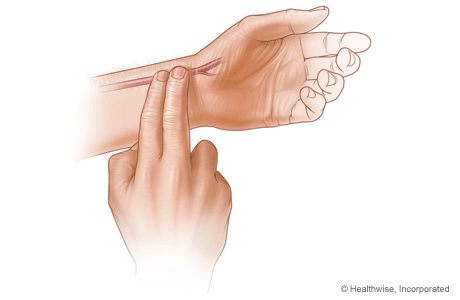 Image from: Kaiser Permanente. (2017). Taking a pulse. Retrieved From: healthy.kaiserpermanente.org...hw201445.shtml
Image from: Kaiser Permanente. (2017). Taking a pulse. Retrieved From: healthy.kaiserpermanente.org...hw201445.shtml- Instruction:
- Demonstrate how to take a pulse at the wrist. Help any participant who can’t find their pulse.
- Share:
- Now that everyone knows how to take their pulse, let’s try to see how our heart rate changes depending on what we are doing!
- Take your pulse seated for ten (10) seconds. Multiply the number by 6 to determine the times your heart beats in sixty seconds. Record it on your worksheet.
- Stand up for a minute. Take your pulse for ten (10) seconds. Multiply the number by 6 to determine the times your heart beats in 60 seconds. Record it.
- Do high knees for two (2) minutes. Take your pulse. Multiply the number by 6 to determine the times your heart beats in sixty seconds. Record it.
- Rest standing for one (1) minute and take your pulse again. Record it.
- Sit down for one (1) minute and take your pulse again. Record it.
- Now, make a graph connecting with all of your data points.
- Share:
- Resting heart rate is the rate when your heart is pumping the lowest amount of blood you need because you’re not exercising. For most people, it is between 60-100 beats per minute (American Heart Association, 2015). What is your resting heart rate?
- It is the rate of your heart while you were sitting.
- A maximum heart rate is an age-related number of beats per minute of the heart when working at its maximum. Everyone’s maximum heart rate varies depending on other factors as well, such as physical activity level, health conditions, and genetics American Heart Association, 2015). However, in general, people’s maximum heart rate can be calculated using their age.
- Resting heart rate is the rate when your heart is pumping the lowest amount of blood you need because you’re not exercising. For most people, it is between 60-100 beats per minute (American Heart Association, 2015). What is your resting heart rate?
- Instruction:
- Have participants complete the following equation to find their estimated maximum heart rate and share out their heart rate(American Heart Association, 2015b):
220 - ___ (their age) = ___ (maximum heart rate)
- Have participants complete the following equation to find their estimated maximum heart rate and share out their heart rate(American Heart Association, 2015b):
- Share:
- Now, what do you notice about the shape of your graphs?
- Answers will vary, but participants should see a bell curve of their heart rate vs. a rollercoaster surge and plummet.
- The rollercoaster up and down is not as good for our bodies, which is why it is important we gradually increase heart rate before exercise and gradually decrease heart rate at the end of exercise to meet the oxygen demands of our tissues. This can be accomplished by warming up and cooling down.
- What are some examples of warm-up and cool-down exercises?
- Responses may include:
- Deep breathing
- Jump ropes
- High knees
- Lunges
- Jumping jacks
- Crunches
- Ankle bounces
- Grapevines
- Power skips
- Planks
- Stretches (calves, shoulders, neck, hamstring, etc.)
- Responses may include:
- Now, what do you notice about the shape of your graphs?
- Share:
- There is another concept called the target heart rate range. Your target heart rate range is the range of heart rates you want to hit during exercise to maximum benefits (American Heart Association, 2015). This range will be different for everyone and depends on factors, such as age, and physical activity levels.
- Knowing your target range is helpful because you don’t want your heart rate to be too high or too low during exercise.
- Instruction:
- Have participants calculate their target heart rate range using the following equations (American Heart Association, 2015):
___ (maximum heart rate) * 0.50 = ___ beats per minute (bpm)
___ (maximum heart rate) * 0.85 = ___ beats per minute (bpm).
- Have participants calculate their target heart rate range using the following equations (American Heart Association, 2015):
- Share:
- You might be thinking that it is not realistic to take your pulse in the middle of exercising. So, how can you find your heart rate while you’re exercising?
- You can either get a heart monitor or try the talk test. The talk test is a simple way to measure the relative intensity that you are exercising at.
- In general, if you're doing a moderate-intensity activity you can talk, but not sing, during the activity. If you're doing a vigorous-intensity activity, you will not be able to say more than a few words without pausing for a breath (CDC, 2015).
Hands-On: Pump It Up Dice
- Instruction:
- Divide participants into groups of three (3) to five (5). Hand each group two (2) dices.
- Using two (2) dice, assign one to be the “Dice of Exercise” and the other to be the “Dice of Time.” It helps to use different colored dices.
- Have participants take turns rolling the die and doing the corresponding exercise (see image below) for the assigned time (multiply # rolled on Dice of Time by ten (10).
- For example, Dice of Exercise die to land on two (2), Dice of Time die lands on four (4) = High knees for forty seconds.
- After each exercise, have participants find and take their heart rate for ten (10) seconds to determine if they are working within their target heart rate range. The next person can go while the other is calculating their heart rate.


Exit Ticket:
- Instruction:
- Have participants write on their worksheet or share out loud the following question(s).
- Why are aerobic activities important?
- What are aerobic activities that you already do? How often do you do them?
- What are aerobic activities that you are going to try?
- Have participants write on their worksheet or share out loud the following question(s).
Bibliography
- American Heart Association. (2015a). All about heart rate. Retrieved from: http://www.heart.org/HEARTORG/Condit...6nW9PwbBIrates
- American Heart Association. (2015b). Know your target heart rates for exercise, losing weight, and health. Retrieved from: https://healthyforgood.heart.org/mov...et-heart-rates
- Centers for Disease Control and Prevention. (2015). Measuring physical activity. Retrieved From: https://www.cdc.gov/physicalactivity/basics/measuring/index.html
- Centers for Disease Control and Prevention. (2015). How much physical activity do children need? Retrieved From: https://www.cdc.gov/physicalactivity/basics/children/index.htm
- Kaiser Permanente. (2017). Taking a pulse. Retrieved From: healthy.kaiserpermanente.org...hw201445.shtml
- Khan Academy of (2012). Lub Dub. Retrieved From: https://www.youtube.com/watch?v=-4kGMI-qQ3I&t=15s
- National Heart, Lung, and Blood Institute. (n.d.). How the heart works. Retrieved From: https://www.nhlbi.nih.gov/health-top...ow-heart-works
- Merriam-Webster Dictionary. Circulate. Retrieved From: https://www.merriam-webster.com/dictionary/circulate
- TED-Ed. (2014). How the heart actually pumps blood – Edmond Hui. Retrieved From: youtu.be/ruM4Xxhx32U
- Walk Across America. (n.d). Walk Across America. Retrieved From: http://www.actionforhealthykids.org/...lking-programs
- U.S. Department of Health and Human Services. (2008). 2008 Physical Activity Guidelines for Americans. Retrieved From: https://health.gov/paguidelines/pdf/paguide.pdf
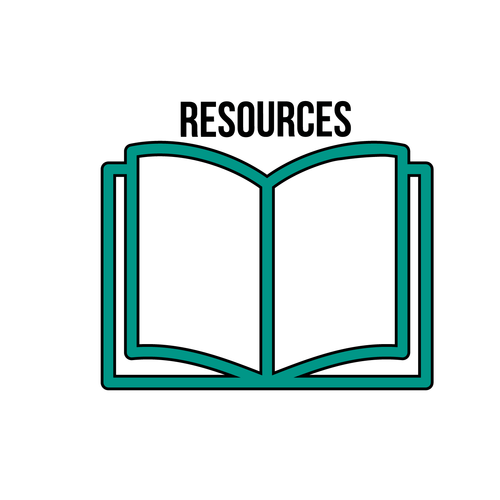
- Optional Hands-On Activities:
- Jumping Jack Tag (Freeze Tag: If outdoor space is available, take students outside to play some freeze tag. However, instead of students freezing when tagged they have to complete a certain number of jumping jacks or another exercise. Note: To be mindful of inappropriate touching or roughness you could use a light ball to tag peers versus hands.
- The Every Time 'I say'... Game: Select a word or words for the entire length of the class or at the end and have a movement for each word. For example, you could say "Every time I say the word exercise do 10 jumping jacks." Put a student in charge to pay attention to when you say your trigger words.
- So You Think You Can Dance Competition: Modeled after the TV show So You Think You Can Dance. This activity will depend on students’ attitudes and enthusiasm towards dancing. Split the class into groups; students who really do not want to participate can be judges.
- Out on the Track: Take students outdoors and set up relay teams. Come up with activities that are physically challenging, but not too strenuous or difficult. Everyone should be able to participate, even if they are not quite in shape. There can be walking races, cheering squads, or dance routines to remind students that all movement counts as exercise.
- Walking Challenge: Challenge participants to Walk Across America which is 5,4000,000 steps. Have your classes compete against each other for the duration of this unit or semester and track their steps with pedometers. The class that reaches the goal or is the closest wins a prize. You can start the competition off by taking your classes on the track to start walking. If students are given pedometers, have each student track his/her steps on their own, and report results to the class in the following weeks. Keep a chart in the classroom so students can record their steps each week. You can download the tracking sheets at this website.
- Digital Exercise: Take your cell phones out and search for exercise videos that look interesting to you. Choose six: three at different levels of intensity and three videos that have different time commitments (i.e, 15 minutes, 30 minutes, 45 minutes).
This lesson was created in partnership with Albert Einstein College of Medicine Department of Epidemiology and Population Health with funding support by the National Institutes of Health NIDDK Grant R01DK097096.

